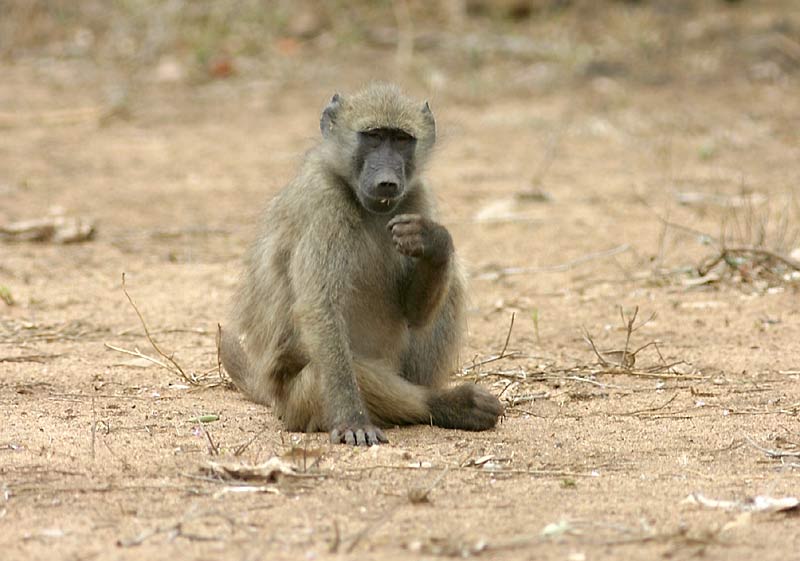Contact Details: Scotch Macaskill, Dirt Road Traders, Currys Post Road, Howick, KwaZulu-Natal, South Africa. Tel: +27 (0)82 578 2329. Privacy: Your privacy is guaranteed. See our Privacy Policy for more. This site accepts advertising and other forms of compensation - see Disclosure and Advertising for details. Site updated: 2022. Copyright © 2002 - 2022 Scotch Macaskill
Baboon Foraging for Grubs and Insects

Chacma baboon (Papio ursinus) sitting on ground foraging for grubs and insects, Kruger National Park, South Africa. © Scotch Macaskill
Return to Baboon Pictures bonus page
The park covers nearly 2 million hectares and is home to an impressive diversity of flora and fauna, including 507 different birds and 147 types of mammal. In addition to the "Big Five" - elephant, lion, leopard, buffalo and rhino - there are also large numbers of giraffe, zebra, wildebeest, hippo, antelope, and hyena. Less common but also seen by visitors on safari are cheetah and wild dog.
Kruger Park has excellent roads and a variety of accommodation, making it an affordable self-drive safari destination. The best time to visit is in winter, from May to September, when vegetation is more sparse making it easier to see the wildlife. Accommodation options include chalets, cottages, bungalows, tents, caravan and camp sites, bush lodges and luxury private safari lodges.
Permitted Uses: See Terms of Use.